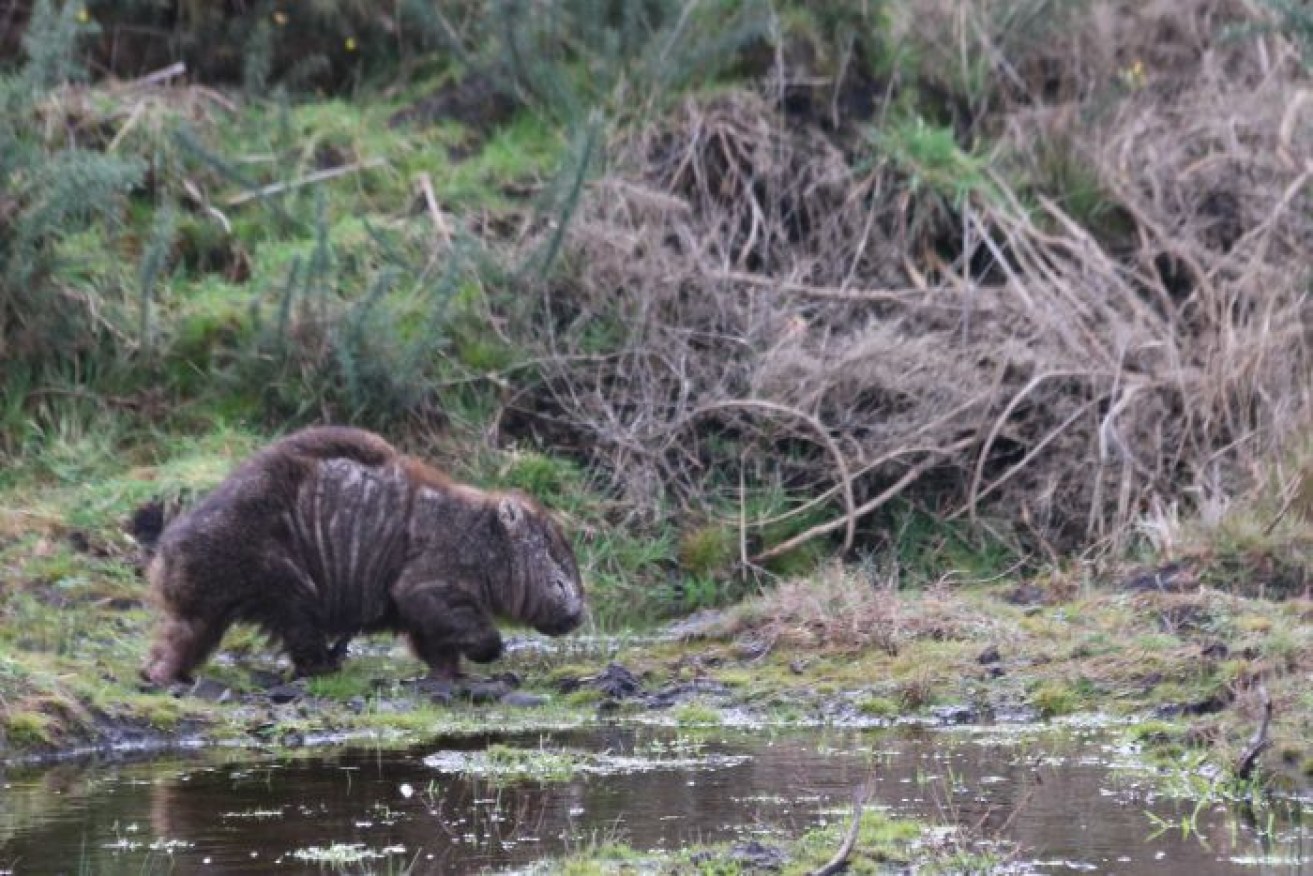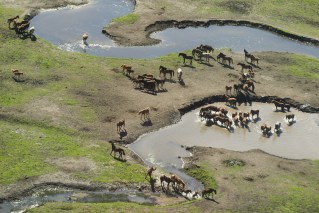High-fat diet may help wombats beat affects of mange, researchers say

A wombat in need of a high fat diet. Photo: ABC
A high-calorie diet could help counter some of the devastating effects of a deadly wombat disease, new research has found.
The disease, sarcoptic mange, is caused by skin burrowing parasites which causes hair loss and skin thickening and often leads to a slow and painful death.
An outbreak at Narawntapu National Park in Tasmania’s north has caused a 94 per cent decrease in the area’s wombat population over the past seven years.
New research by the University of Tasmania (UTAS) has found sarcoptic mange also caused a major loss of body heat, highly increased metabolic rate and a change of fat composition in wombats.
The study found the loss of heat and metabolic rise caused affected wombats to burn up high amounts of energy and become restricted in their foraging efforts, resulting in an inability to eat enough to replace energy levels and survive.
UTAS wildlife ecologist Scott Carver said he found the research “remarkable” because mange-affected wombats were previously believed to eat more than healthy ones.
“One of the paradoxes that I have always had with wombats is you see them with sarcoptic mange and they are out feeding for [up to] four times as long as a healthy wombat each day,” Dr Carver said.
“And yet they continue to lose weight, they continue to lose body condition and get sick and eventually die.
What we found was that wombats appear to be feeding more but are actually feeding slightly less because they are taking more micro pauses and so consuming less food over time than healthy counterparts.
“Because they are irritated and sore they are taking these very short pauses between eating, which is adding up to less food consumed per day than healthy wombats.
“At the same time, they also have elevated metabolic rates, so they need to consume more energy but are actually consuming less.
“This explains why even though it looks like they are trying to cope with the disease they are not able to achieve that.”
Food supplements a possible solution
Lead researcher Alynn Martin said the research also showed obvious changes in fatty tissue composition in wombats with the disease, which suggested a high-fat diet might work as part of the solution to the health issues associated with mange.

Scott Carver and Alynn Martin say food supplements may help wombats. Photo: ABC
“We are thinking about how we can actually manage mange at an individual scale, one of the possible solutions is food supplementation,” she said.
“Supplementation has the potential to help arrest the fatty tissue changes we have seen in mange-ridden wombats, enable the storage of more nutrients to meet the animals’ high metabolic rate and help keep these animals alive.
“These guys are burning more energy and not taking in as much food so whatever the supplementation would be would have to be something that has got high calories so that even though they are eating less they are taking in more calories so that they can sustain themselves
“Of course, this is tricky with wildlife, because you don’t want to accidentally supplement the wrong species, or give them the wrong types of food. But that is one avenue that could be explored to help these animals counter mange.”
Ms Martin said sarcoptic mange affected more than 100 species globally and the research could also be applied to other species.
“We’ve seen the same sort of heat loss due to hair loss in wolves for example,” Ms Martin said.
“Even though we are researching wombats specifically, the management implications we’ve found are far broader reaching.”








